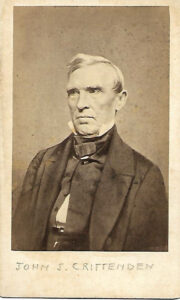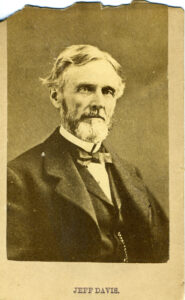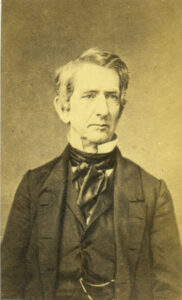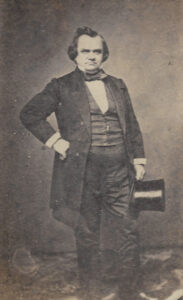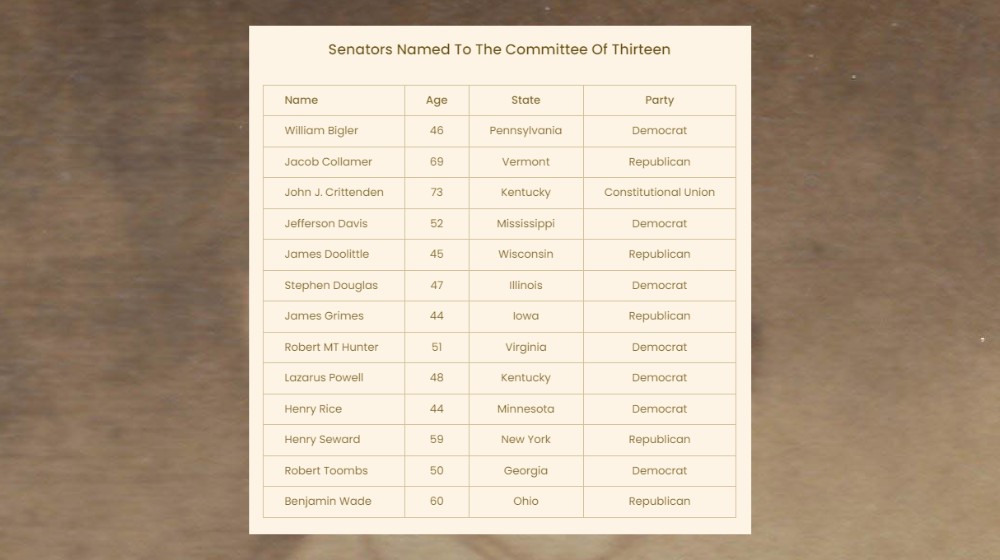The Senate “Committee of Thirteen” Try To Save the Union
One month after the election of Abraham Lincoln, political leaders across Washington search frantically for a compromise to his promised ban on slavery in the west which threatens to drive the South out of the Union.
In the Senate, where Democrats still control 38 of the 66 seats, Kentucky’s Lazarus Powell calls for a “Committee of Thirteen” to arrive at an option. The members comprise leaders from all parties and include 7 Democrats, 5 Republicans, and 1 Constitutional Unionist, the former Whig, John J. Crittenden, also of Kentucky.
Members of the Senate’s “Committee of Thirteen” in December 1860
| Name | Home State | Party | Slaves | During the War |
| William Bigler | Pennsylvania | Northern Democrat | No | Retires from politics |
| Jefferson Davis | Mississippi | Southern Democrat | Yes | President – CSA |
| Stephen Douglas | Illinois | Northern Democrat | Yes | Dies in June 1861 |
| Robert M. T. Hunter | Virginia | Southern Democrat | Yes | 2nd CSA Sec of State |
| Lazarus Powell | Kentucky | Southern Democrat | Yes | Remains Kentucky Senator |
| Henry Rice | Minnesota | Northern Democrat | No | Remains Vermont Senator |
| Robert Toombs | Georgia | Southern Democrat | Yes | 1st CSA Sec of State, General |
| Jacob Collamer | Vermont | Republican | No | Remains Vermont Senator |
| James Rood Doolittle | Wisconsin | Republican | No | Remains Wisconsin Senator |
| James Grimes | Iowa | Republican | No | Remains Iowa Senator |
| William Seward | New York | Republican | No | U.S. Sec of State |
| Benjamin Wade | Ohio | Republican | No | Remains Ohio Senator |
| John J. Crittenden | Kentucky | Constitutional Union | Yes | Joins U.S. House til ’63 death |
The Committee meets six times in total, with the second session on December 22 setting the stage for the outcomes to follow.
| Session | Date | Focus |
| 1 | December 21 | First informal discussions among aa few members |
| 2 | December 22 | Proposals submitted by Toombs, Crittenden and Davis |
| 3 | December 24 | Douglas and Seward submit proposed Amendments to the Constitution to solve the conflict and reactions to the prior ideas are discussed. |
| 4 | December 26 | Toombs proposal is debated further and Bigler offers his alternative |
| 5 | December 28 | The Douglas plan is discussed but no resolution is reached |
| 6 | December 31 | The Committee proceedings are approved and sent to the Senate |
The fate of the Committee is determined almost immediately after Jefferson Davis demands that any final agreement must gain a majority of the votes across both party contingents, i.e. at least 4 of the 7 Democrats and 3 of the 5 Republicans –almost a certain impossibility.
The actual proposals that follow are already familiar to both sides.
Davis stakes out the hardline Southern call for a formal Amendment to the Constitution sanctioning slavery:
Resolved, That it shall be declared, by amendment of the Constitution, that property
in slaves, recognized as such by the local law of any of the States of the Union, shall
stand on the same footing in all constitutional and federal relations as any other species
of property so recognized; and, like other property, shall not be subject to be divested or
impaired by the local law of any other State, either in escape thereto or of transit or
sojourn of the owner therein; and in no case whatever shall such property be subject
to be divested or impaired by any legislative act of the United States, or of any of the
Territories thereof.
The more moderate Toombs falls back on motions outlined in his 1850 Georgia Platform which mirror Davis except for requiring only “clauses” to the Constitution not an Amendment.
Stephen Douglas, who has lost the election to Lincoln, simply repeats his call for “popular sovereignty” with each new Territory holding elections once 50,000 white resident are present to decide on a “Slave State of Free State” declaration.
The voice of the Republicans belongs to Seward, about to be Secretary of State, whose only assurance is that the new government will not tamper with slavery in the states where it already exists.
Only one compromise continues to generate interest. It belongs to the venerable Unionist John Crittenden who calls for extending the 1820 Missouri Compromise boundary line at 36’30” latitude all the way across the west to the pacific. This would extend slavery into Oklahoma, Texas, the New Mexico Territory and southern California – all with climates well suited to support cotton plantations.
While the Crittenden Compromise makes sense to many, it remains insufficient for the Southern members, and the Committee of Thirteen submits its final journal of proceeding on December 31 absent any proposed agreements. Nine days later, Mississippi becomes the second state to secede, following South Carolina.
